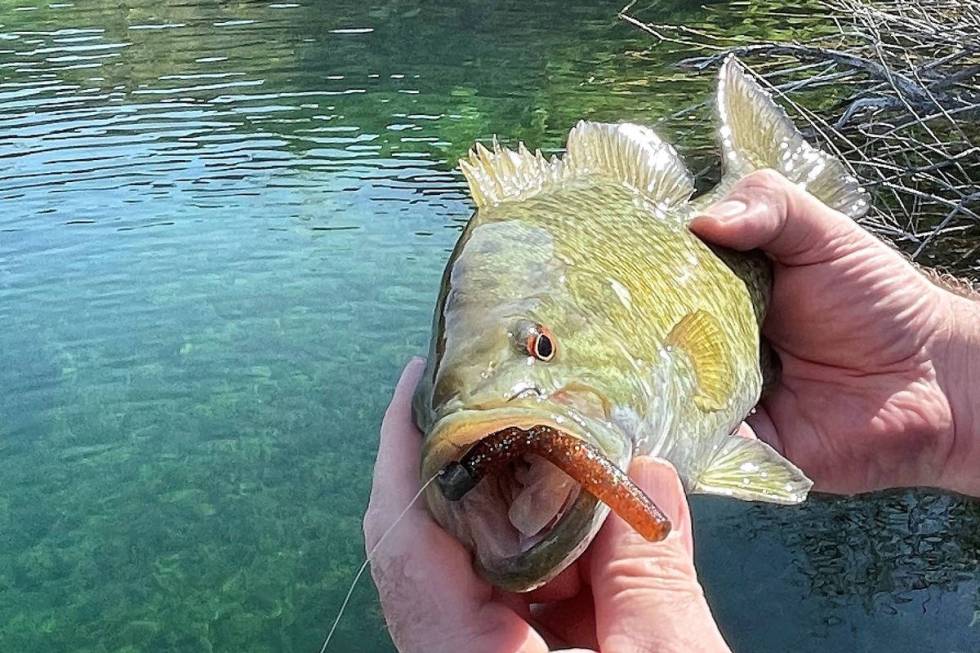Even in ideal conditions, fishing for bass real challenge

“Bass eat things that swim, and bass eat things that crawl.”
Those are the words of Gary Thien, a former professional bass angler who was operating the Bank Robber School of Bass fishing in Lake Havasu, Arizona, when he shared that thought with me. At the time he was explaining the idea behind the rig for which his school was named.
As simple as it sounds, Thien’s statement made a lot of sense and helped put bass fishing into perspective for a guy that grew up trout fishing. That we used his Bank Robber rig to reel in a few bass later that day confirmed Thien’s assertion. It is a mantra that has guided my fishing choices ever since.
When Jed Topham and I launched out of Cottonwood Cove early Friday morning, you can bet my rods were baited up with options that represented things that swim and things that crawl. With water temperatures pushing into the high 50s, we were hoping for a good day of sight fishing for nesting smallmouth bass.
Generally, smallies begin moving into shallow water when water temperatures warm into the 50-degree range and get serious about spawning when it nears 60 degrees or so. The temperature at Cottonwood cove was 58. So we were optimistic.
The males select their nest location in an area with a rocky, gravel or course sandy bottom. Sometimes they will even nest on bedrock. Most of the time you will find nests in an area protected from wind-driven wave action and associated with some type of structure, such as a root ball, a submerged limb or a rock. That does not mean some independent thinking smallmouth bass won’t change things up a bit.
Jed and I found one smallish male actively working on a nest underneath a root ball on the north side of a shallow cove. Using his tail, the fish was digging out a shallow depression partially hidden beneath a large root. It was easy to see where the fish had swept away the algae to reveal a light-colored area that stood out against the darker, algae covered rock around it.
This nest builder was too busy to give our bait offerings a second thought.
We found perhaps a couple of dozen nests in various stages of development, but only a couple that were inhabited by a fish willing to take a break and chase our baits. While most nests were located along the north side of the coves, I did manage to pull a scrappy fish off a nest located in the shadow of a tree on the south shoreline.
The nest was hard to see because it was tucked under a long branch that had broken off a tree and settled to the bottom. The fish came out of his hiding place to hit my craw-colored Ned Rig.
One fish provided quite the learning experience that came with a dish of humble pie. Each time we tossed our baits into the nest, the fish raced over and assumed what I call a security posture, staring down the bait as if to will it out of the nest. Eventually he grew visibly agitated and became more aggressive. Each time we threw a bait into the nest, the fish gave it the security look, and then suddenly grabbed the bait and blew it out of the nest.
That all happened so fast, that we missed the hook set every time. Even though we knew it was coming. Chalk up another win to the fish.
Bass do eat things that swim, and bass do eat things that crawl. But bass can also teach you a lesson or two.
Freelance writer Doug Nielsen is a conservation educator for the Nevada Department of Wildlife. His “In the Outdoors” column is not affiliated with or endorsed by the NDOW. Any opinions he states in his column are his own. Find him on Facebook at @dougwritesoutdoors. He can be reached at intheoutdoorslv@gmail.com